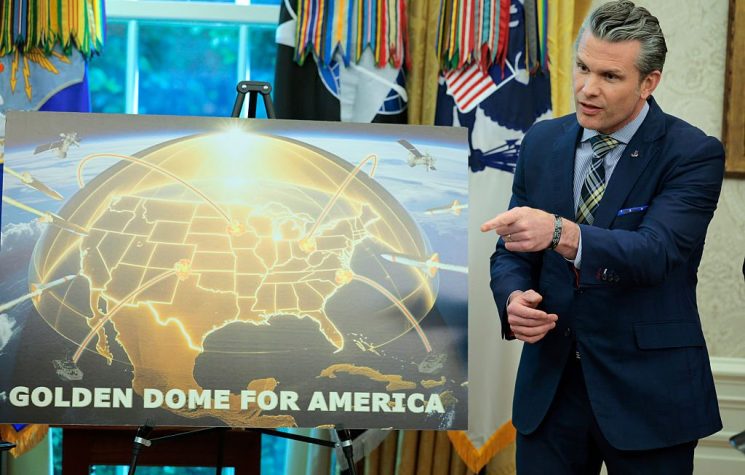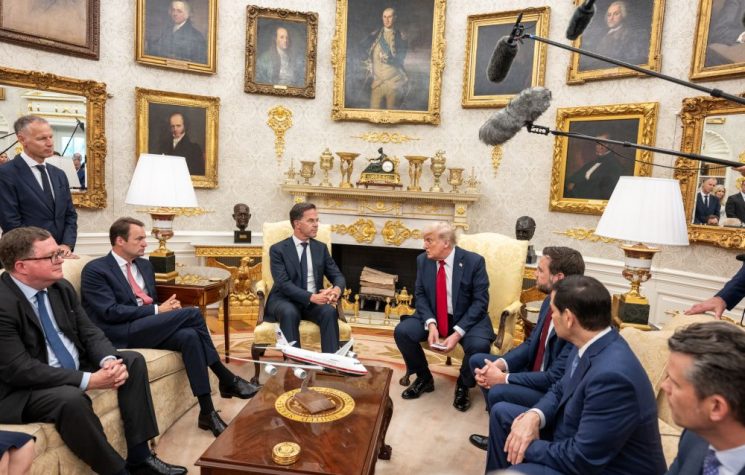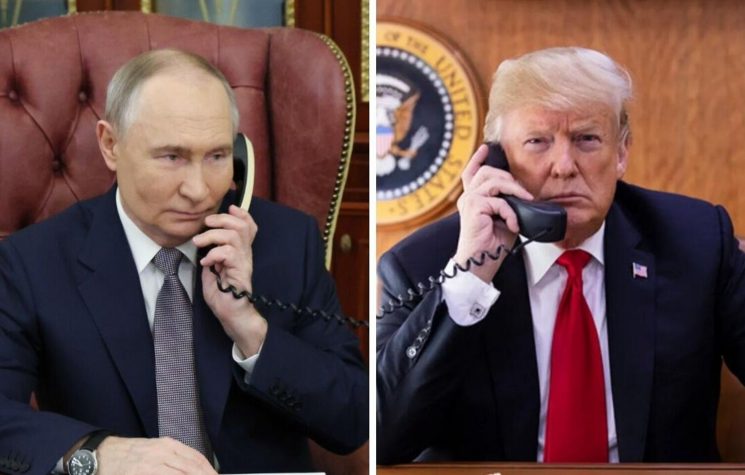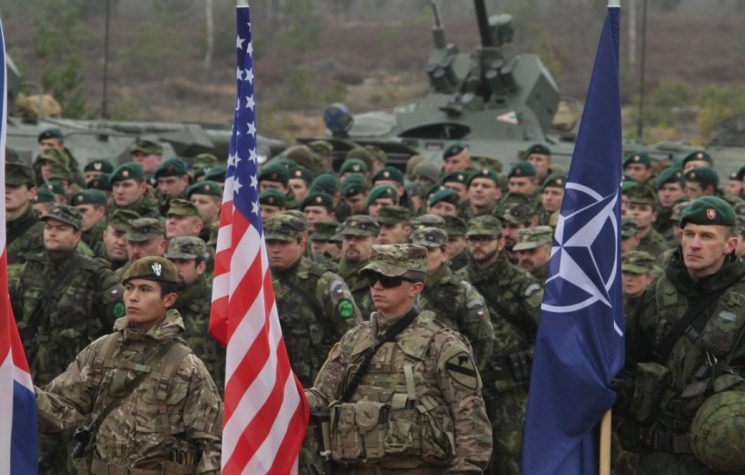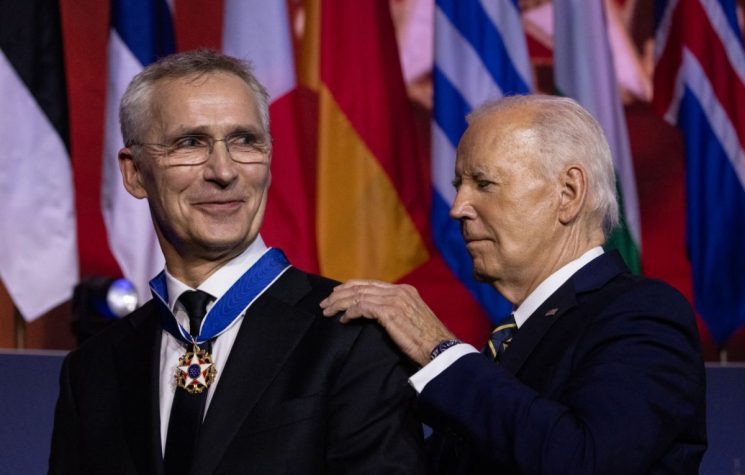Just when you thought the leaders of NATO could not push the limits of insanity any further, something like NATO 2030 is announced.
After helping blow up the Middle East and North Africa, dividing the Balkans into zones of war and tension, turning Ukraine upside down using armadas of neo Nazis, and encircling Russia with a ballistic missile shield, the leaders of this Cold War relic have decided that the best way to deal with instability of the world is… more NATO.
In a June 8th online event co-sponsored by the Atlantic Council, NATO Secretary General Jens Stoltenberg announced the launch of a planning project to reform NATO called NATO 2030. Stoltenberg told his audience that in order to deal with Russia and China’s strategic partnership which is transforming the global balance of power, “we must resist the temptation of national solutions and we must live up to our values: freedom, democracy and the rule of law. To do this, we must stay strong militarily, be more united politically and take a broader approach globally.”
In the mind of Stoltenberg, this means expanding NATO’s membership into the Pacific with a high priority on the absorption of Australia, New Zealand, Japan and South Korea into NATO’s dysfunctional family. It also means extending NATO’s jurisdiction beyond a military alliance to include a wider political and environmental dimension (the war on climate change is apparently just as serious as the war on terrorism and should thus be incorporated into NATO’s operating system).
Analyzing China’s intentions through the most Hobbesian dark age lens on the market, Stoltenberg stated “they are investing heavily in modern military capabilities, including missiles that can reach all NATO allied countries. They are coming closer to us in cyberspace. We see them in the Arctic, in Africa… and they are working more and more together with Russia.”
In spite of NATO’s Cold War thinking, Russia and China have continuously presented olive branches to the west over the years- offering to cooperate on such matters as counter-terrorism, space exploration, asteroid defense, and global infrastructure projects in the Arctic and broader Belt and Road Initiative. In all instances, these offers have been met with a nearly unanimous cold shoulder by the western military industrial complex ruling NATO and the Atlantic alliance.
The Engine of War Heats Up
As Stoltenberg spoke these words, the 49th Baltic Operations running from June 1-16th were underway as the largest NATO exercise in the Baltic Sea featuring “30 ships and submarines, and 30 aircraft, conducting air defence, anti-submarine warfare, maritime interdiction and mine countermeasure operations.” In response Moscow reinforced its armored forces facing Europe.
Meanwhile in China’s backyard, three aircraft carriers all arrived in the Pacific (the USS Theodore Roosevelt, USS Ronald Reagan and USS Nimitz) with a senate Armed Services Committee approval of $6 billion in funds for the Pacific Defense Initiative which Defense News stated will “send a strong signal to the Chinese Communist Party that America is deeply committed to defending our interests in the Indo-Pacific”. The committee also approved a U.S. Airforce operating location in the Indo-Pacific for F-35A jets in order to “prioritize the protection of the air bases that might be under attack from current or emerging cruise missiles and advanced hypersonic missiles, specifically from China.”
Another inflammatory precursor for confrontation came from a House Republican Study Committee report co-authored by Secretary of State Pompeo calling for sanctioning China’s leadership, listing Russia as a state sponsor of terror and authorizing the use of military force against anyone on a Foreign Terrorist Organization list. When one holds in mind that large sections of Iran’s Revolutionary Guard happen to be on this list, it is not hard to see how quickly nations doing business with Iran can be considered “state sponsors of terror”, justifying a use of military force from America.
With this level of explicit antagonism and duplicity, it is no wonder that China’s foreign ministry announced on June 10th that it would not participate in joint three-way arms talks between the USA and Russia. If America demonstrated a coherent intention to shift its foreign policy doctrine towards a genuine pro-cooperation perspective, then it is undoubtably the case that China would enthusiastically embrace such proposals. But until then, China is obviously unwilling to loose any part of its already small nuclear deterrent of 300 warheads (compared to Russia and the USA, who each own 6000).
The Resistance to the Warhawks
I have said it many times before, but there is currently not one but two opposing American military doctrines at war with each other and no assessment of American foreign policy is complete without a sensitivity to that fact.
On the one hand, there is the sociopathic doctrine which I outlined summarily above, but on the other hand, there exists a genuine intention to stop the “forever wars”, pull out of the Middle East, disengage with NATO and realign with a multipolar system of sovereign nation states.
This more positive America expressed itself in Trump’s June 7th counter-attack on former Secretary of Defense Gen. James Mattis who had fueled the American Maidan now unfolding by stating his belife that solutions can happen without the President. Trump had fired Mattis earlier over the Cold Warrior’s commitment to endless military enmeshment in Syria, Turkey, Afghanistan and Iraq. In this Oval Office interview, the President called out the Military industrial complex which Mattis represents saying “The military-industrial complex is unbelievably powerful… You have no idea. Some legit, and some non-legit.”
Another aspect of Trump’s resistance to the neo-cons running the Pentagon and CIA is reflected in the June 11 joint U.S.-Iraq statement after the Strategic Dialogues summit of American and Iraqi delegates which committed to a continued reduction of troops in Iraq stating:
“Over the coming months, the U.S. would continue reducing forces from Iraq and discuss with the government of Iraq the status of remaining forces as both countries turn their focus towards developing a bilateral security relationship based on strong mutual interests”.
This statement coincides with Trump’s May 2020 call to accelerate U.S. troop withdrawal from Afghanistan which has seen a fall from 12000 troops in February to under 9000 as of this writing.
Most enraging to the NATO-philes of London, Brussels and Washington was Trump’s surprising call to pull 9500 American troops out of Germany hours before Stoltenberg gave his loony NATO 2030 speech with Johann Wadephul (Deputy head of the CDU) saying “these plans demonstrate once again that the Trump administration neglects a central element of leadership: the involvement of alliance partners in the decision-making process”. In his next breath, Wadephul made his anti-Eurasian delusion transparent saying “Europe gains from the Alliance being unified. Only Russia and China gain from strife.”
Just a few months earlier, the President showed his disdain for the NATO bureaucracy by unilaterally pulling 3000 American military personnel out of the Trident Juncture exercise held annually every March.
In Defense of President Trump
In spite of all of his problems, Trump’s resistance to the dark age/neocon faction which has been running a virtually independent military-industrial-intelligence complex since FDR’s death in 1945 demonstrates a high degree of courage unseen in American presidents for many decades.
Most importantly, this flawed President represents a type of America which is genuinely compatible with the pro-nation state paradigm now being led by Russia and China.
Trump’s recent attempt to reform the G7 into a G11 (incorporating Russia, India, South Korea and Australia) is a nice step in that direction but his exclusion of China has made it an unworkable idea.
To solve this problem, American University in Moscow President Edward Lozansky stated in his recent Washington Times column that adding China to the list making it a G12 would be a saving grace to the idea and one of the best flanking maneuvers possible during this moment of crisis. Lozansky’s concept is so important that I wish to end with a larger citation from his article:
“Both Russia and China got the message a long time ago that they need to stay together to withstand the efforts to destroy them in sequence… The G-7 indeed is an obsolete group and it definitely needs a fresh blood. Therefore, a G-12 meeting in New York in late September during the annual meeting of the U.N. General Assembly would be a perfect place and timing since Mr. Trump had already announced that he is willing to hold a G-5 summit with the leaders of Russia, China, Britain and France — the five permanent members of the U.N. Security Council — to discuss nuclear security issues. China so far is reluctant to join these talks, arguing that its smaller nuclear force is defensive and poses no threat. However, for the discussion in the G-12 format Mr. Putin might be able to convince his pal Xi to accept Mr. Trump’s invitation. This would be a huge achievement for the world’s peace and at the same time allow Mr. Trump to score lots of political points not only from his electoral base but from undecided and even from his opponents who want to save their families from nuclear holocaust.”
Unless world citizens who genuinely wish to avoid the danger of a nuclear holocaust learn how to embrace the idea of a G-12, and let the NATO/Cold War paradigm rot in the obsolete trash bin of history where it rightfully belongs, then I think it is safe to say that the future will not be something to look forward to.
For the next installment, we will take a look at the British Imperial origins of NATO and the American deep state in order to help shed greater light on the nature of the “two Americas” which I noted above, have been at war with each other since 1776.








